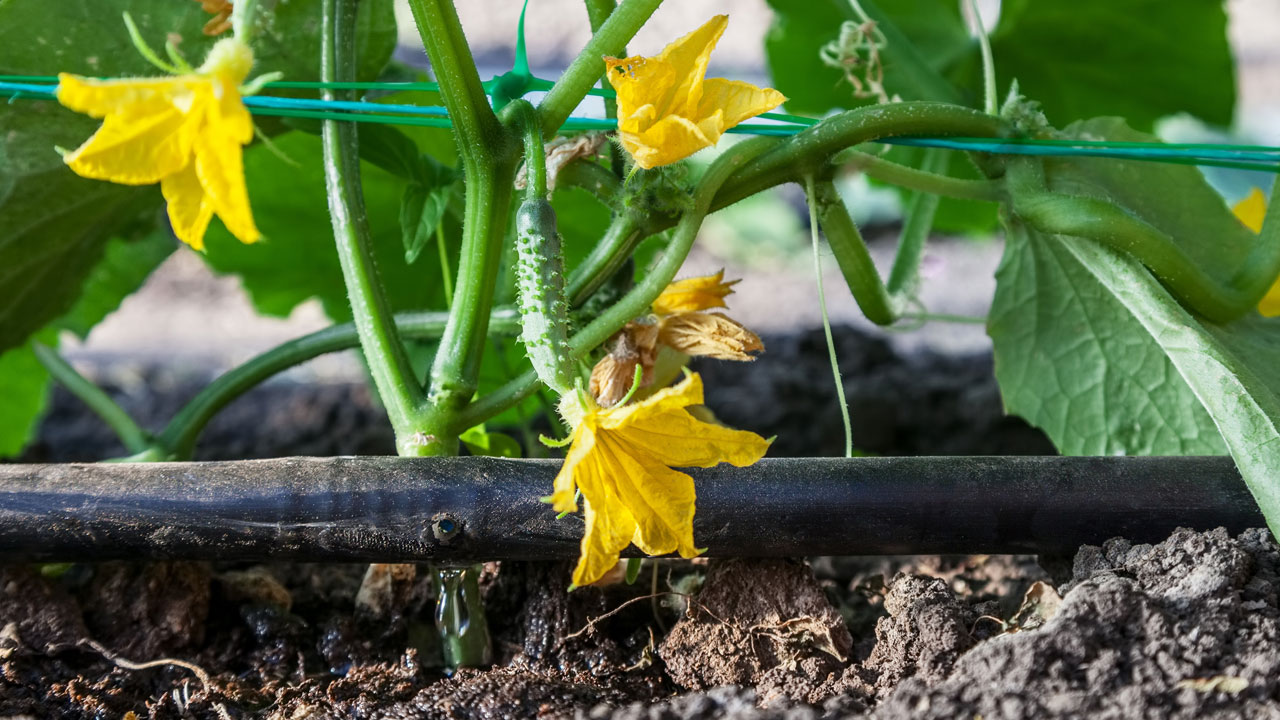What are the Environmental Benefits of Drip Irrigation?
Apr 20th 2021
Drip irrigation offers many benefits for gardeners, farmers and anyone else who grows things. But what are the environmental benefits of drip irrigation? Compared to traditional irrigating methods, the benefits of drip irrigation system use include a big savings in water use. That will cut your expenses, no matter what your source of water.
In addition, drip irrigation benefits plants as well. Providing water with the drip methods means it reaches the roots more directly. More water goes to the plant and less to evaporation, so it can help plants grow more quickly.
And because it does not rain down on plants from above, a drip system can help reduce the spread of disease and the leaf problems some plants can have when watered from above. Because drip emitters target individual plants, they can inhibit weed growth as well.
Besides benefiting your plants and your finances, this smart system of watering can also help the environment. Read on for a list of drip irrigation’s environmental benefits from DripWorks.
Saving Water
Saving water is doubtless drip irrigation’s main environmental benefit. Correctly installed, a drip irrigation system can provide water savings up to 80% compared to other types of irrigation.
This eco-friendly feature of drip irrigation is becoming increasingly important as the world’s weather becomes more extreme. Lengthy droughts are becoming more common in some areas. Water-stingy irrigation systems can help ensure that gardeners and farmers can continue to keep their plants healthy.
In addition, by cutting water use by farmers, drip irrigation can free up water for other important uses. These include water used by people in their homes as well as water needed for commercial and industrial uses.
Saving Fertilizer
Just as with water, drip irrigation systems can help save fertilizer. By installing fertilizer injectors in their drip irrigation to create a fertigation system, gardeners and farmers can fertilize their plants while watering them in one convenient, efficient system.
This allows exact amounts of fertilizer to be applied at exactly the right time. In addition to helping plants grow better, this method cuts waste of fertilizer. And cutting down on waste is always a good thing for the environment.
Saving Energy
Because drip irrigation systems operate on low-pressure systems, pumps require less energy to operate them. This reduces the amount of coal, oil, natural gas, or other fuels required to create that energy.
Reducing energy use provides great financial benefits to users. It also benefits the environment by cutting down on the release of carbon dioxide, which has been a major contributor to global warming. In addition, reducing fuel use decreases other pollutants released when coal, oil and other fuels are burned to create energy.
Promoting Better Plant Growth
Compared to other irrigation methods, drip irrigation produces “more crop per drop.” According to an MIT study, drip irrigation boasts a 90% efficiency. That compares to 60% for surface watering and 75% for sprinkler watering.
In addition, drip irrigation can produce better plants. It can increase plant yields by 20% to 90%, according to the National Geographic.
This increase in plant growth is crucial for an ever-growing world. As earth’s population of humans continues to rise, the amount of food grown will need to rise to increase to ensure adequate nutrition.
The supply of arable land is finite, and in some areas decreasing because of urbanization. Efficient and healthful watering via systems like drip irrigation can help ensure sufficient supplies of food for all of us in the future.

